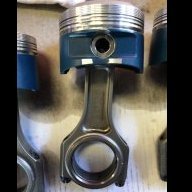Announcements
-
Similar Content
-
Latest Posts
-
I agree, don't go trusting those trims. As I said, first step is to put the logger away, and do the basics in diagnosis. I spend plenty of time with data loggers. I also spend plenty of time teaching "technicians" why they need to stop using their data loggers, and learn real diagnostics. The amount of data logs I play with would probably blow most people away. I don't just use it to diagnose. I log raw CAN data too, as a nice chunk of my job is reverse engineering what automotive manufacturers are doing.
-
By joshuaho96 · Posted
I'm aware, but unless you're actually seeing the voltage the ECU is seeing and you're able to verify the sensors are actually working I find it hard to just trust STFT/LTFT. I will say, logging the ECU comes naturally to me because it's one of the lowest effort methods of diagnosis and I do similar things in my day job all the time. Staring at 20+ charts looking for something that isn't quite right isn't for everyone. NDS1 allows you to log almost everything so that's normally what I do and then sort out the data later. -
Silly question, as I bet you've checked already, but the motor turns over by hand yes? I suspect Neil has a spare starter, though if not, I believe I have a spare R33 (or two) starter.
-
Yeah just run one of those posts to the Link like GTSBoy said. From google it looks like a "mishimoto boost controller" is a manual boost controller. Since you already have the link just buy any MAC valve and plumb it in where the mishimoto is now. Wires to the solenoid should come from the Link's / standard loom boost control wiring (I guess you have an r32, not sure if it is gtst or gtr, if it is GTR where is a 2 pin connector near the engine bay fuse box/injector resistor for that purpose, assuming the standard boost controller is gone)
-
No. The ECU's hose is for a connetcion between the plenum (assuming single throttle body, not ITBs) and the ECU's internal MAP sensor. This is the primary load measurement of the ECU - so you need to get this one right. This has NOTHING to do with the boost contol. The wastegate also needs to see a boost signal - but it is actually far better for it NOT TO COME FROM THE PLENUM (again, assuming single TB, and not ITBs). This should come from the turbo's compressor housing (assuming there is a nipple on there, which there might well not be), or on the boost pipe somewhere between the turbo and the TB. On the pipe from the turbo to the intercooler is usually most convenient. The boost controller is then located between that boost source and the wastegate, ACCORDING TO THE CORRECT PLUMBING DRAWING FOR THAT BOOST CONTROLLER. There is no general diagram or instruction that will be correct for every case. Then the other ports on the plenum are for purposes such as Duncan described. If the boost controller has an internal MAP sensor, for a boost display, etc, then it will want to be hooked up there, alongside the ECU and the FPR.
-




Recommended Posts
Create an account or sign in to comment
You need to be a member in order to leave a comment
Create an account
Sign up for a new account in our community. It's easy!
Register a new accountSign in
Already have an account? Sign in here.
Sign In Now